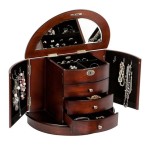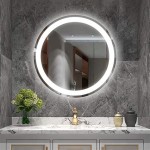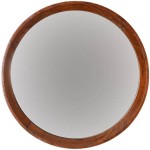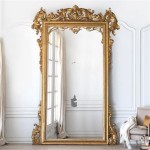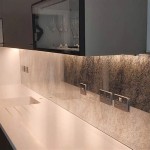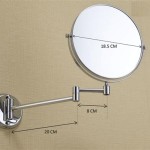Mirrored Room Dividers: Expanding Space and Light
Mirrored room dividers are versatile interior design elements capable of transforming a space. They function as both partition and decor, offering solutions for space management, visual expansion, and light enhancement. Their reflective surfaces create illusions of greater depth and brightness, addressing common challenges in smaller or dimly lit areas. Beyond their practical applications, mirrored room dividers contribute to the aesthetic appeal of a room, reflecting existing design elements and adding a touch of sophistication.
The use of room dividers dates back centuries, with various cultures employing screens and panels for privacy, separation, and decorative purposes. Mirrored versions represent a modern evolution, incorporating reflective surfaces to amplify the benefits. They are available in a wide array of styles, from minimalist designs to ornate, framed pieces, ensuring compatibility with diverse interior design themes. Considerations for material quality, frame construction, and mirror type are crucial for selecting a durable and aesthetically pleasing option. The strategic placement of a mirrored room divider can dramatically alter the perception of a room, maximizing its potential for both functionality and visual appeal.
Maximizing Space and Creating Illusions
One of the primary benefits of mirrored room dividers lies in their ability to create the illusion of greater space. Mirrors, by their nature, reflect the surrounding environment, effectively doubling the perceived size of a room. This effect is particularly valuable in smaller apartments, studios, or rooms where square footage is limited. By strategically positioning a mirrored room divider, the reflection can capture and replicate the existing space, making it feel significantly larger and more open. This is achieved without the need for structural alterations or extensive renovations.
The effectiveness of this illusion depends on several factors. The size of the mirror surface is a key determinant; larger mirror panels will create a more pronounced effect. The placement of the divider relative to natural light sources also plays a significant role. Positioning the mirror to reflect light from a window or doorway will further enhance the sense of spaciousness. The surrounding decor and furniture arrangement also influence the overall impact. A cluttered or overly decorated space will diminish the effectiveness of the mirrored divider, while a minimalist or well-organized room will amplify its benefits. Therefore, careful consideration of these elements is essential for maximizing the space-enhancing potential of a mirrored room divider.
Beyond simply creating the illusion of more space, mirrored room dividers can also be used to strategically define zones within a larger room. In open-plan living areas, for example, a divider can delineate between a living room and a dining area, or between a workspace and a relaxation zone. This provides a sense of separation and organization without the commitment of permanent walls. The reflective surface also adds a layer of depth and visual interest to these defined areas. When carefully chosen, the style of the mirrored room divider can complement the design themes of each individual zone, creating a harmonious and cohesive living space.
Enhancing Natural and Artificial Light
In addition to expanding the perception of space, mirrored room dividers significantly enhance the natural and artificial light within a room. Mirrors act as reflectors, bouncing light around the space and increasing overall illumination. This is particularly beneficial in rooms with limited natural light or those situated in darker areas of a building. By strategically positioning a mirrored divider to capture and reflect sunlight from a window, the light can be distributed more evenly throughout the room, creating a brighter and more inviting atmosphere.
The impact of a mirrored room divider on lighting can be further amplified by considering the placement of artificial light sources. Positioning lamps or overhead lighting fixtures strategically so that their light is reflected by the mirror will significantly increase the overall brightness of the room. This effect is especially noticeable in the evening or during periods of low natural light. The reflected light also creates a softer, more diffused illumination, which can reduce harsh shadows and create a more comfortable and relaxing ambiance.
The type of mirror used in the room divider can also influence its light-enhancing properties. Clear mirrors will generally reflect the most light, while tinted or antiqued mirrors may offer a more subtle or diffused reflection. The choice of mirror type should be based on the desired aesthetic and the specific lighting requirements of the room. For example, a room with abundant natural light may benefit from a tinted mirror that softens the intensity, while a darker room may require a clear mirror to maximize light reflection. The frame surrounding the mirror also plays a role; a light-colored or reflective frame will further enhance the light-reflecting properties of the divider.
Aesthetic Versatility and Design Integration
Mirrored room dividers offer a high degree of aesthetic versatility, making them suitable for a wide range of interior design styles. They are available in numerous designs, from minimalist and contemporary to ornate and traditional, allowing for seamless integration into diverse design schemes. The frame surrounding the mirror is a key element that contributes to the overall aesthetic. Frames can be constructed from various materials, including wood, metal, and composite materials, and finished in a variety of colors and textures.
A minimalist mirrored room divider with a sleek, unadorned frame can complement a modern or contemporary interior, adding a touch of understated elegance. Conversely, an ornate divider with a carved wooden frame and intricate detailing can enhance a more traditional or classical design. The choice of frame material and finish should be carefully considered to ensure that it aligns with the existing design elements in the room. For example, a metal frame with a brushed finish may be suitable for an industrial-inspired space, while a wooden frame with a painted finish may be more appropriate for a bohemian or farmhouse-style room.
Beyond the frame, the mirror itself can also be customized to enhance the aesthetic appeal of the room divider. Tinted mirrors, antiqued mirrors, or mirrored panels with decorative etching can add visual interest and character. The size and shape of the mirror panels can also be varied to create unique and eye-catching designs. Some mirrored room dividers incorporate multiple smaller mirror panels arranged in a mosaic pattern, while others feature a single large mirror panel for a more minimalist look. The arrangement of the mirror panels can also be used to create specific visual effects, such as creating a sense of movement or adding depth to the room. By carefully considering these aesthetic factors, mirrored room dividers can be seamlessly integrated into any interior design, adding both functionality and visual appeal.
The placement of the mirrored room divider in relation to other design elements is also crucial. Positioning the divider to reflect artwork, furniture, or architectural features can amplify their visual impact and create a more cohesive and harmonious design. The divider can also be used to create focal points within the room, drawing attention to specific areas or objects. For example, a mirrored room divider placed behind a sofa or a statement chair can create a dramatic backdrop and enhance the overall aesthetic of the seating area. Similarly, a divider placed in a hallway or entryway can create a welcoming and visually appealing entrance. By strategically positioning the mirrored room divider, it can become an integral part of the overall design, enhancing the aesthetic appeal of the entire space.

Mirror Room Divider In 2024 Glass Partition Designs Wall Design

Amaia Mirrored Arc Room Divider Screen Urban Outfitters

Benjara 70 In Distressed Brown 3 Panel Mirror Room Divider With Wood Frame Bm276717 The Home Depot

Diy Mirrored Room Divider In 6 Easy Steps The Aspiring Home

Diy Mirrored Room Divider In 6 Easy Steps The Aspiring Home

Round Mirrored Room Divider Hook Props

How To Build A Mirrored Changing Screen With Pin Boards On Back Ana White

Creative Mirror Partition Design Ideas For Your Home

Another Great Headboard Mirror Room Divider Home Decor Furniture

Golden Gold Rosegold Mirror Decorative Metal Stainless Steel Room Divider Polished 1 Panel

